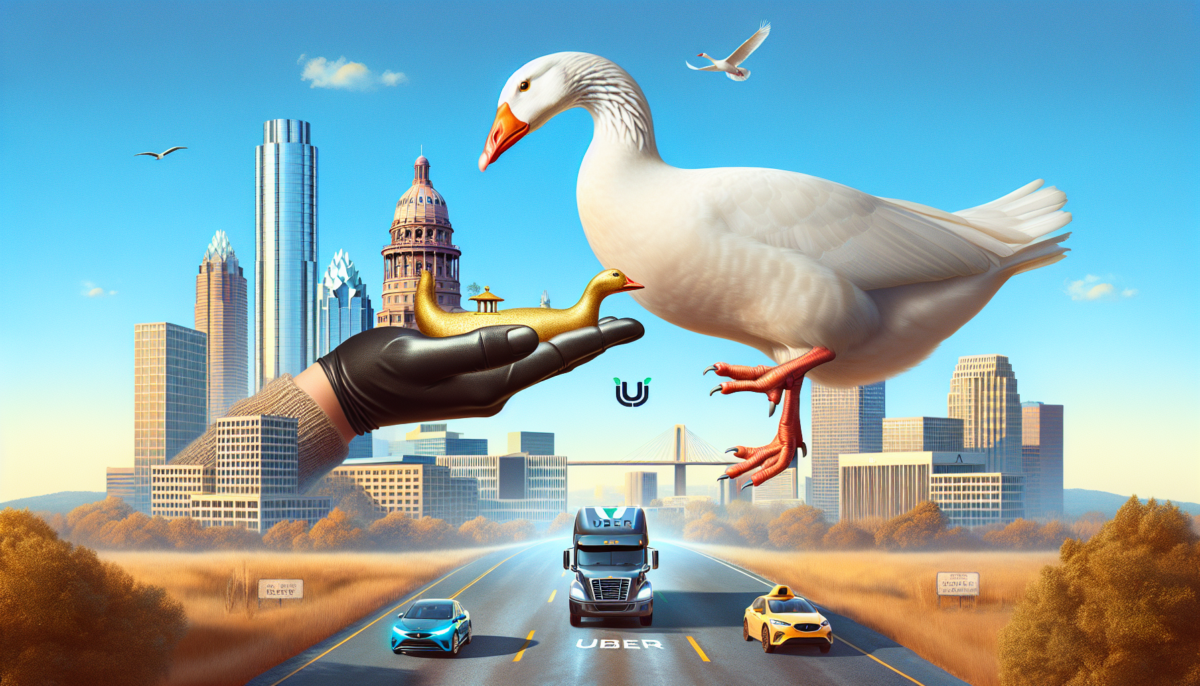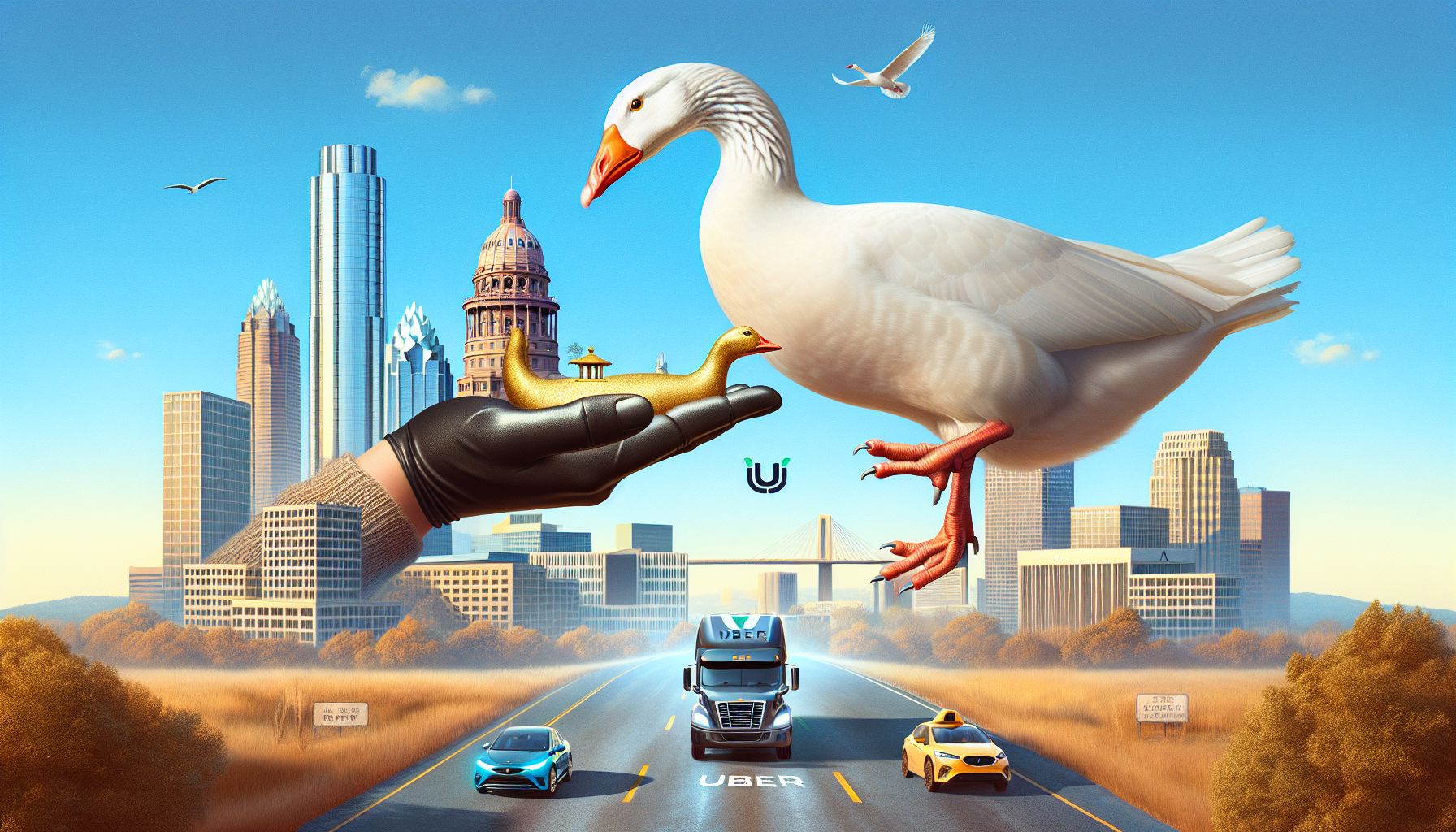Why is Waymo Transferring the Golden Goose to Uber with Its Expansion into Austin and Atlanta?
We independently review everything we recommend. When you buy through our links, we may earn a commission which is paid directly to our Australia-based writers, editors, and support staff. Thank you for your support!

Waymo and Uber Join Forces for Driverless Services in Austin and Atlanta: A Lucrative Opportunity Seized?
In an unexpected turn of events, Waymo—the self-driving vehicle sector of Alphabet (the parent company of Google)—has broadened its alliance with Uber. The companies have revealed that Uber will take charge of Waymo’s driverless car services exclusively in Austin, Texas, and Atlanta, Georgia. This move prompts discussions about the trajectory of autonomous vehicle technology, its economic implications, and the possible friction between Uber and its human drivers.
Snapshot
- Waymo is extending its driverless vehicle services to Austin, TX, and Atlanta, GA.
- Uber will exclusively operate Waymo’s autonomous vehicles in both cities.
- Collectively, the population of these cities is approximately 1.48 million, making them key markets.
- The partnership might be driven by Waymo’s expensive vehicle costs and difficulties in scaling.
- This initiative could heighten tensions between Uber and its human drivers.
- Potential long-term rivalries between Waymo and Uber could arise.
Waymo’s Expansion: An Unexpected Development
 Waymo has been instrumental in the self-driving car sector since its inception in 2009 as part of Google. The company has made substantial investments in autonomous vehicle technology, currently operational in Phoenix, Los Angeles, and San Francisco. Nonetheless, the recent verdict to allow Uber to manage operations in Austin and Atlanta exclusively has raised some eyebrows.
Waymo has been instrumental in the self-driving car sector since its inception in 2009 as part of Google. The company has made substantial investments in autonomous vehicle technology, currently operational in Phoenix, Los Angeles, and San Francisco. Nonetheless, the recent verdict to allow Uber to manage operations in Austin and Atlanta exclusively has raised some eyebrows.
With this agreement, Uber will handle the daily operations of Waymo’s autonomous vehicles in these two new cities. Considering the significant potential of driverless ride-hailing services, especially in populous urban areas, this decision implies that Waymo might be forgoing a considerable revenue avenue—thus the expression “giving away the golden goose.”
Why Choose Austin and Atlanta?
With a collective populace of about 1.48 million, Austin and Atlanta present highly lucrative markets for autonomous vehicles. Both cities boast tech-savvy inhabitants and rapidly developing infrastructure, making them prime candidates for deploying autonomous vehicle technology.
However, what distinguishes this expansion from Waymo’s other territories is that Uber will be the sole operator. This situation leads to inquiries about why Waymo would relinquish direct oversight of such promising new markets. The rationale may be rooted in the economics of scaling and managing autonomous vehicle services.
Challenges in Scaling and Elevated Costs
Waymo has consistently encountered hurdles when it comes to extending its services beyond its original testing grounds. The technology that powers autonomous vehicles is intricate; it relies on a blend of lidar, radar, cameras, and computational power to operate safely. Moreover, the vehicles must navigate using highly precise HD maps, necessitating extensive scanning of every new area.
Additionally, the Jaguar I-Pace, which Waymo utilizes, carries a hefty cost of around USD $70,000 before incorporating the bespoke hardware essential for autonomous operation. The overall expenses tied to the development and upkeep of these vehicles, coupled with the necessary network infrastructure, complicate achieving the economies of scale required to reduce ride prices for users.
In cities like Austin and Atlanta, where the demand for ride-hailing is notable, Waymo may determine that transferring operations to Uber allows for cost-sharing while still retaining a foothold in these vital markets.
Uber’s Role in the Autonomous Landscape
While Uber has previously attempted to create its own autonomous vehicle technology, it has not fared as well as companies like Waymo. By collaborating with Waymo, Uber acquires access to advanced technology without the substantial investment in research and development. However, this also places Uber in a precarious situation regarding its human drivers.
If autonomous vehicles begin to take on a greater share of rides, Uber’s human drivers might find themselves sidelined. The reduced necessity to pay drivers could lower costs for Uber in the long term, yet it might also incite backlash from drivers who depend on the platform for their income. Some drivers have already expressed concerns about Uber’s foray into autonomous vehicles, fearing job insecurity.
Waymo and Uber: A Potentially Strained Collaboration?
As Uber and Waymo currently appear to benefit from each other’s capabilities, the long-term scenario may not be as favorable. Should Uber continue to broaden its autonomous vehicle usage, it could eventually find itself directly competing with Waymo, as both firms strive for supremacy in the driverless ride-hailing sphere.
This collaboration might also give rise to heightened competitive friction between the two entities. Waymo’s technological edge is significant, but Uber’s extensive ride-hailing platform provides unmatched access to customers. Ultimately, one company may seek to acquire the other, or the relationship could become strained, resulting in a split or possible bankruptcy for one of the players.
Conclusion
Waymo’s foray into Austin and Atlanta alongside Uber signifies a major transition in the autonomous vehicle sector. By allowing Uber to take exclusive control of its driverless car services in these two locations, Waymo could be attempting to alleviate the steep costs associated with scaling its operations. Nevertheless, this choice also brings up worries regarding the future of Uber’s human drivers and potential long-term rivalries between the two firms.
Q: Why did Waymo team up with Uber for Austin and Atlanta?
A:
Waymo probably partnered with Uber to divide the hefty costs of scaling its autonomous vehicle services. By capitalizing on Uber’s existing framework and customer reach, Waymo can concentrate on tech innovation while Uber manages operations in these new locales.
Q: How does this partnership impact Uber’s human drivers?
A:
This partnership may spark tensions between Uber and its human drivers. As autonomous vehicles start handling more rides, the availability of rides for human drivers could diminish, potentially affecting their earnings. Some drivers have already raised alarms about this development.
Q: Why are Austin and Atlanta significant markets?
A:
Austin and Atlanta are fast-growing tech hubs with a joint population of about 1.48 million individuals. These cities offer lucrative prospects for ride-hailing ventures, making them prime targets for autonomous vehicle expansion.
Q: What costs are associated with operating Waymo’s autonomous vehicles?
A:
The Jaguar I-Pace utilized by Waymo costs approximately USD $70,000 before any added hardware is integrated. Apart from vehicle expenses, there are costs linked to network infrastructure, HD mapping, and ongoing software development, all of which render scaling operations expensive.
Q: Why hasn’t Uber developed its own autonomous vehicle technology?
A:
Uber has endeavored to create autonomous vehicle technology previously but encountered both technical and financial challenges. By aligning with Waymo, Uber can tap into state-of-the-art technology without the significant commitment to research and development.
Q: Could this partnership result in a long-term conflict between Waymo and Uber?
A:
Indeed, there exists the possibility of sustained competitive tension. While the collaboration is mutually beneficial at present, both Uber and Waymo could find themselves vying for control in the driverless ride-hailing market as the technology gains broader acceptance.
